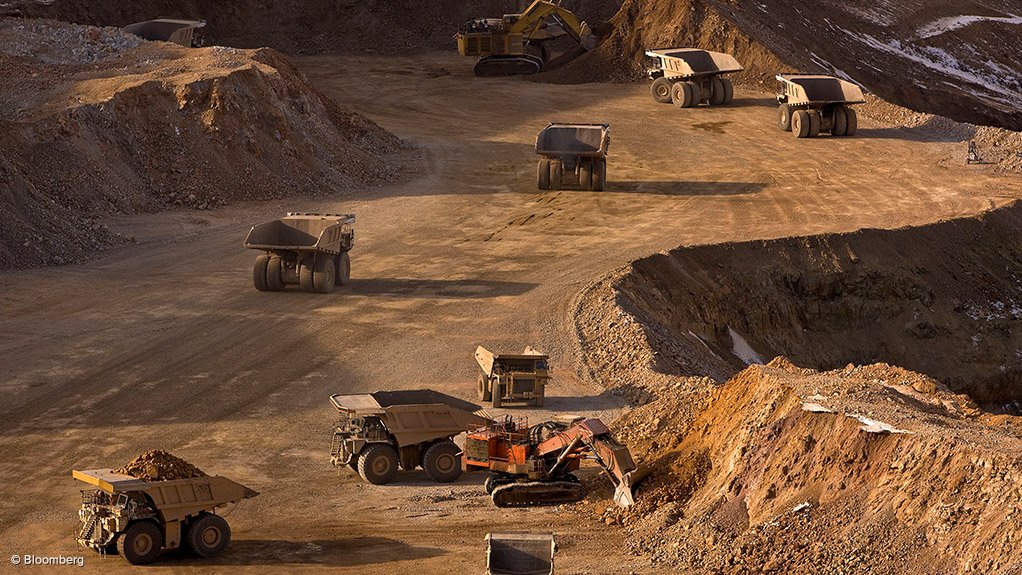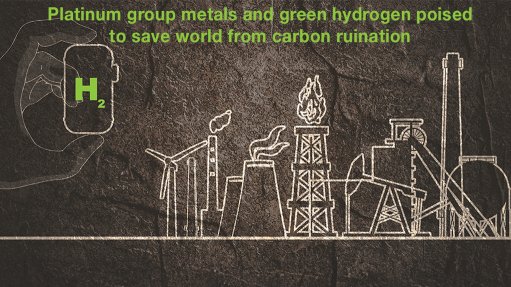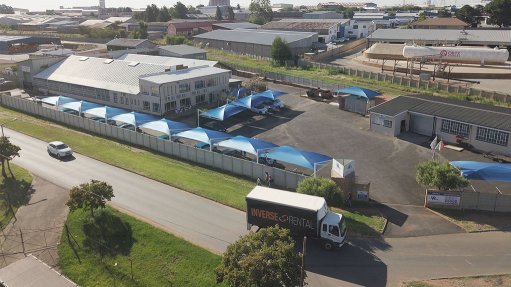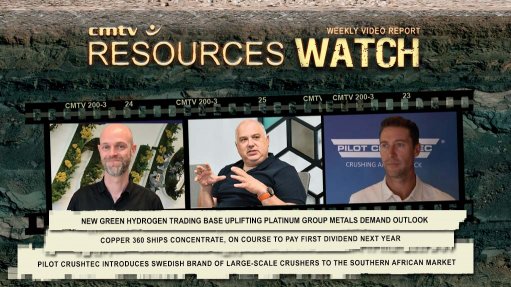‘Business as usual’ no longer an option for Canada’s miners
TORONTO (miningweekly.com) – Canadian mining companies need to change the way they do business to weather ongoing market volatility and remain viable into the future, a Deloitte report has found. “Mining is a tough business; costs keep rising, grades keep going down and miners are unable to replace quality reserves with quality reserves,” Deloitte’s Americas mining leader, Glenn Ives, told Mining Weekly Online on Wednesday morning.
The report, ‘Tracking the trends 2014’, uncovered the pressing trends facing the mining industry in the year ahead and offered strategies that companies could employ to adapt to changing industry dynamics.
Deloitte expects mining firms to continue to be confronted with the compounding challenges of cost inflation, falling commodity prices, supply-demand imbalances and decreased productivity levels. While long-term fundamentals remained strong, the report suggests mining firms are ill-advised to simply wait out the market swing.
Instead, Canadian miners should embrace innovation and revise their core systems and processes, from mine design and planning, to energy supply and adopting emerging technologies. Deloitte also recommended applying new approaches to financial, safety and talent management programmes, as well as to external relations with communities, governments, shareholders and regulators.
“Business as usual is no longer an option for Canada’s mining companies. Despite the weakness of commodities markets, both operating and capital costs are stubbornly high and rising.
“In fact, the mounting costs of doing business topped our list of trends for the third year in row. Rather than one-off cost-cutting measures, mining firms need to implement sustainable cost management programmes that improve efficiency, productivity and shareholder returns across their operations,” Ives said.
He stressed that innovation may, in fact, need to be the inflection point, as miners slowly started implementing new technologies. “Expect to see more conveyor belts, less trucks in the pit, alternative fuels being used, etcetera.”
Ives said that despite the current commodity price weakness, input and production costs remained stubbornly high. To reduce costs sustainably, miners must improve their overall productivity, strengthen their management and reporting systems, use analytics to uncover their underlying cost drivers, and rationalise their supply chains.
He added that the ongoing global economic weakness and the short-term decline of demand out of China had pushed down commodity prices, resulting in industry performance dips. However, long-term demand indicators remained robust.
“I am fundamentally bullish on commodity demand, especially from Asia. Demand from the region, including China, is set to rise significantly as the general public’s affluence appreciates. Economic wellbeing requires resources, and despite the growth rates having tapered off somewhat, the region is still growing at a fast pace,” Ives said.
Rather than mothballing projects, miners should find ways to weather current supply/demand imbalances.
He pointed out that genuine performance improvement would only come when companies revise their underlying systems. “Miners should innovate by adopting technologies to enable mine design and planning, energy supply, as well as adoption of emerging technologies.”
Ives noted that weak shareholder returns and industry impairments had all but shut off equity markets. Traditional lenders also are pulling back from the mining sector. “Although major diversified companies responded by issuing bonds, juniors have been hard hit. This may represent an acquisition opportunity for mining companies with large cash holdings,” he said.
RISKY INVESTMENT
Deloitte’s national mining leader in Canada Jürgen Beier echoed Ives's sentiment, saying that the equity markets have “turned off the tap”, and that traditional lenders were also pulling back from the mining sector.
“With financing proving elusive, even for strong projects in mining-friendly jurisdictions, many Canadian junior mining companies are now struggling for survival. To keep their heads above water, they need to get creative and tap into alternative funding sources, from sovereign wealth funds to private equity firms, nontraditional stock markets and pension funds,” Beier added.
In response to demands from investors and analysts, mining companies had previously developed massive project pipelines. Investment in marginal projects, however, had resulted in record asset impairments. To turn the tide, miners needed more robust project scoping processes, governance systems, and risk control mechanisms.
He pointed out that while local community demands were in many areas ramping up, so too were governments’ increasing demands for a bigger share of the pie. Governments demand contributions from the mining sector in the form of taxes, royalties, and other concessions and mining companies had to improve government relations and governments needed to foster greater regulatory stability.
Examples could be found in Barrick Gold’s Pueblo Viejo project, in the Dominican Republic, where the government demanded more revenue; in the Australian mining tax regime that was seen as "moving back and forth"; in Zambia’s increased mining taxes and even Quebec’s efforts to extract more taxes from the resources sector.
“Miners should open a dialogue by forming policy development lobbies, coordinate local infrastructure projects, engage citizens, and negotiate with all levels of government,” Ives said.
In Canada, the US and Mexico, ‘Nimbyism’ (an acronym for “not in my backyard”) had become a significant constraint to developing mines. Ives said that in Canada and Mexico, aboriginal groups had increasingly been causing a stir around issues relating to land ownership – and some First Nations often have ill-advised concepts of their ‘rights’ to land. In the US, environmentalism was increasingly impeding mine development.
“These factors constrain development of new mines and the mines are not getting built as and when needed. In fact, in the past, mines used to take about five years from the discovery to production, but these days, that time has stretched to about 20 years. The concerning fact is that the rest of the world is catching up to this prolonged turnaround time,” he said.
Social media trends and attention from monitoring and standard-setting bodies had also placed corporate reputations and market valuations at risk. “Miners should take a nuanced approach to stakeholder relations, including developing local supply bases, improving communications, sharing infrastructure among various economic clusters and sourcing local labour,” Ives said.
Further, to improve compliance, mining companies should adopt appropriate internal controls and policies, engage in compliance audits and risk assessments, and upgrade their systems to support sufficient reporting detail.
Another significant challenge the mining industry had to grapple with was talent shortages, even in executive positions.
“The dearth of skills is also of significant impact on the Americas. With the exception of a few countries, such as Chile, there is a general 20-year talent gap. One sees a lot of grey hair and young guys, but very little middle-aged top management,” he said.
“Closing the gap requires the adoption of new talent management strategies. Miners should standardise systems, embrace new training environments, and take the steps necessary to attract both skilled management and sector-savvy directors.”
The ten trends identified in the global report are:
1. The cost of contraction: mining productivity hits new lows
2. Matching supply to demand: market imbalances wreak commodity price havoc
3. The remaking of mining: exploring the innovation imperative
4. Finding funding: debt up, deals down, and juniors fight for survival
5. The project pipeline stutters: record impairments call capital allocation practices into question
6. Power to the people: local community demands ramp up
7. Resource nationalism spreads: government relations marked by rising hostility
8. Crackdown on corruption: a zero tolerance regulatory environment complicates compliance
9. Changing the safety equation: from zero harm to zero fatalities
10. A dearth of skills: the talent gap slinks into executive suites
Comments
Press Office
Announcements
What's On
Subscribe to improve your user experience...
Option 1 (equivalent of R125 a month):
Receive a weekly copy of Creamer Media's Engineering News & Mining Weekly magazine
(print copy for those in South Africa and e-magazine for those outside of South Africa)
Receive daily email newsletters
Access to full search results
Access archive of magazine back copies
Access to Projects in Progress
Access to ONE Research Report of your choice in PDF format
Option 2 (equivalent of R375 a month):
All benefits from Option 1
PLUS
Access to Creamer Media's Research Channel Africa for ALL Research Reports, in PDF format, on various industrial and mining sectors
including Electricity; Water; Energy Transition; Hydrogen; Roads, Rail and Ports; Coal; Gold; Platinum; Battery Metals; etc.
Already a subscriber?
Forgotten your password?
Receive weekly copy of Creamer Media's Engineering News & Mining Weekly magazine (print copy for those in South Africa and e-magazine for those outside of South Africa)
➕
Recieve daily email newsletters
➕
Access to full search results
➕
Access archive of magazine back copies
➕
Access to Projects in Progress
➕
Access to ONE Research Report of your choice in PDF format
RESEARCH CHANNEL AFRICA
R4500 (equivalent of R375 a month)
SUBSCRIBEAll benefits from Option 1
➕
Access to Creamer Media's Research Channel Africa for ALL Research Reports on various industrial and mining sectors, in PDF format, including on:
Electricity
➕
Water
➕
Energy Transition
➕
Hydrogen
➕
Roads, Rail and Ports
➕
Coal
➕
Gold
➕
Platinum
➕
Battery Metals
➕
etc.
Receive all benefits from Option 1 or Option 2 delivered to numerous people at your company
➕
Multiple User names and Passwords for simultaneous log-ins
➕
Intranet integration access to all in your organisation




















